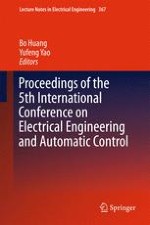2016 | OriginalPaper | Buchkapitel
Research on Friction and Thermal Load Performance of Hydro-viscous Clutch
verfasst von : Li-gang Ma, Chang-le Xiang, Ming-gang Du, Liu-yang Guo
Erschienen in: Proceedings of the 5th International Conference on Electrical Engineering and Automatic Control
Verlag: Springer Berlin Heidelberg
Aktivieren Sie unsere intelligente Suche, um passende Fachinhalte oder Patente zu finden.
Wählen Sie Textabschnitte aus um mit Künstlicher Intelligenz passenden Patente zu finden. powered by
Markieren Sie Textabschnitte, um KI-gestützt weitere passende Inhalte zu finden. powered by
